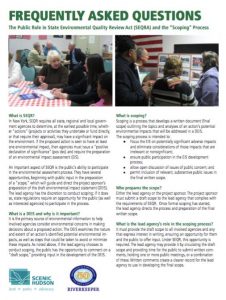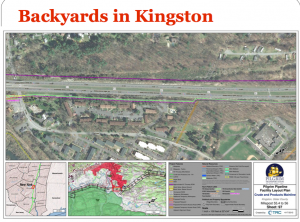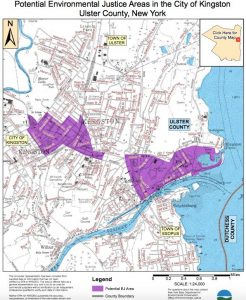By Rebecca Martin
 “The Proposed Pilgrim Pipelines Project: What Ulster County Citizens Need To Know and How Local Action Makes Global Impacts.“ on Saturday, January 28, 2017 at Kingston City Hall located at 420 Broadway in Kingston NY from 1:00pm – 4:00pm (snow date January 29). Guest panelists include Jeremy Cherson (Riverkeeper), Sue Rosenberg (Coalition Against Pilgrim Pipeline/CAPP) and Jen Metzger (Citizens For Local Power) and Andy Bicking (Scenic Hudson). Brought to you by KingstonCitizens.org. This event will be filmed.
“The Proposed Pilgrim Pipelines Project: What Ulster County Citizens Need To Know and How Local Action Makes Global Impacts.“ on Saturday, January 28, 2017 at Kingston City Hall located at 420 Broadway in Kingston NY from 1:00pm – 4:00pm (snow date January 29). Guest panelists include Jeremy Cherson (Riverkeeper), Sue Rosenberg (Coalition Against Pilgrim Pipeline/CAPP) and Jen Metzger (Citizens For Local Power) and Andy Bicking (Scenic Hudson). Brought to you by KingstonCitizens.org. This event will be filmed.
###
Pilgrim Pipeline Holdings, LLC has proposed to construct two parallel pipelines each up to 20 inches in diameter that would run from Albany, NY to Linden, NJ along the NYS Thruway and through private property. In total, the pipelines would cover some 170 miles (including five laterals totaling nearly 13 miles), impacting 31 municipalities in Albany, Rensselaer, Greene, Ulster, Orange, and Rockland counties. The pipelines would receive an estimated 200,000 barrels per day of Bakken crude oil by way of rail into Albany, proposing to ship the crude oil in one mainline south and bring refined products back north.
The pipelines would run through several sections of the City of Kingston with even more pipelines crossings through the Town of Ulster (TOU). It is also being proposed that one of the four pump stations (the only one that would be located near a residential area) is to be placed only 200 feet away from a trailer park on Sawkill Road in the TOU impacting the Town of Kingston, too.
Proponents have said that pipelines will reduce the need to transport crude oil using rails (bomb trains) or barges (in the case of the Anchorage project). Kate Hudson of Riverkeeper disagrees. “Having barges won’t prevent pipelines, and having pipelines won’t prevent barges, and transport by rail won’t prevent either of the others. None of these industries has made a compact with the others, saying, “If you move the oil, we’ll back out of the business.”
In other words, more opportunities to move crude oil simply means more crude oil. Not less.
The proposal has the potential for significant environmental impacts according to the New York State Department of Environmental Conservation, stating that the Pilgrim Pipelines project “…would cross 257 streams and waterbodies (232 along mainline pipelines and 25 along laterals), including the Hudson River and multiple major and minor tributaries of the Hudson. There are also 296 (9.2 linear miles) crossings of wetlands; including 25 crossings of NYSDEC protected freshwater wetlands (approximately 19 along mainline pipelines and 6 along laterals). Additionally, there will be four pump stations and 215 permanent access roads and temporary access roads at every mile.”
Next up? A Draft Scope Document.
Last week, KingstonCitizens.org participated in one of the ongoing CAPP (Coalition Against Pilgrim Pipelines) meetings that was held in Kingston. In attendance to help us all to clarify steps were Scenic Hudson, Riverkeeper, Food and Water Watch and other representatives from as far away as New Jersey. The volunteers and activists, long awaiting the Draft Scope in SEQR (State Environmental Review Act), were anxious for an update. (More on that below).
What is a “Draft Scope” document? A detailed description can be found in the Department of Environmental Conservation’s (DEC) SEQR guideline where it is described as “a process that develops a written document that outlines potential environmental impacts of an action (the project) that will have to be addressed in a DEIS or EIS (draft environment impact statement). It’s purpose is to narrow issues and ensure that the draft EIS is accurate and complete, ensuring public participation, open discussion and inclusion of all relevant public issues for a final written scope.”
To put it in simply, it is exactly like a table of contents for an environmental review. Kingston being an Involved Agency means that we will have the opportunity to shape it.
What makes us an Involved Agency?
Digging up backyards in Kingston’s Ward One along the NYS Thruway is in the proposal, making the City of Kingston an Involved Agency in SEQR.  Therefore, our next steps must be to keep an eye out for the Draft Scope document. Once released, we will have a window for review so to make certain that any and all potential environmental impacts in our community are included for further study. (Although there is typically a 30 day window to make comments on the scoping document, Environmental and grassroots groups have already formally requested a 90 day draft scope comment period along with meetings in every impacted county, and every city in addition to one scoping meeting in NYC.)
Therefore, our next steps must be to keep an eye out for the Draft Scope document. Once released, we will have a window for review so to make certain that any and all potential environmental impacts in our community are included for further study. (Although there is typically a 30 day window to make comments on the scoping document, Environmental and grassroots groups have already formally requested a 90 day draft scope comment period along with meetings in every impacted county, and every city in addition to one scoping meeting in NYC.)
Fortunately, elected and appointed officials in the City of Kingston have been incredibly responsive in a timely way to this proposal, hitting every mark with clarity and strength. Along with both the executive and legislative branches in concert here, Kingston’s CAC (Conservation Advisory Council) has taken an active role in reviewing materials and making excellent recommendations to our elected officials. We thank them all for being such solid partners in this.
VIEW: Actions taken by Kingston City Hall
What’s holding up the Draft Scope Document? Potential Environmental Justice Communities – and Kingston should be listed as one of them.
As mentioned, we have been expecting the release of the Draft Scope Document for months now – ever since it was confirmed that the DEC and NYS Thruway Authority would co-lead the SEQR review process. So what’s the hold-up?
Apparently, the Department of Environmental Conservation has two policies that have potentially come into play and this could potentially help us.
The first is Commissioner Policy #29 “Environmental Justice and Permitting“. The policy “amends the DEC environmental permit process by identifying potential environmental justice areas; providing information on environmental justice to applicants with proposed projects in those communities; enhancing public participation requirements for proposed projects in those communities; establishing requirements for projects in potential environmental justice areas with the potential for at least one significant adverse environmental impact; and providing alternative dispute resolution opportunities to allow communities and project sponsors to resolve issues of concern to the community.”
There are nine potential environmental justice (EJ) communities in New York State as it pertains to the proposed Pilgrim Pipelines project. This determination is based on data from the 2010 census. Although implementing the policy is not mandatory, it appears that it is being considered and therefore, there will be no draft scope until an extra consultation plan is in place.
As you can see here, the City of Kingston has a potential Environmental Justice (EJ) area according to the attached DEC map. However, Kingston is not one of the potential EJ communities identified by Pilgrim Pipelines LLC in their now defunct preliminary DEIS.
The City of Kingston and its residents should push the DEC and NYS Thruway Authority (the co-lead agencies in SEQR) to require Pilgrim Pipeline LLC to conduct an enhanced participation plan under the DEC’s Commissioner Policy #29 for Kingston by using this attached LETTER modeled after Albany’s South End Community. It’s important, too, that we do this before the end of the year.
The second policy brought to our attention was Commissioner Policy #42 “Contact, Cooperation, and Consultation with Indian Nations“. Issued in March of 2009, the policy provides “guidance to Department staff concerning cooperation and consultation with Indian Nations on issues relating to protection of environmental and cultural resources within New York State.”
It is unclear how this will be implemented as it pertains to Pilgrim. The policy is being reviewed, however, and will no doubt inform this process in one way or another.
Access to Information, Process and the Law.
Those who have followed us over the years know how important it is to us to advocate for easy access to good information. From there, understanding proper process and the laws that are in place to protect us is imperative.
There are many steps up ahead, so it was heartening to learn the other night that the proposed Pilgrim Pipelines in part is a NY State project, therefore the laws are specific to NYS and not the federal government. This works in our favor especially in today’s climate, and we are thankful to have SEQRA guide us toward the correct outcome. But it only can occur if more of us commit to seeing the process through until the end by insisting on facts, following process and utilizing the law that protects us.
We can do this.

